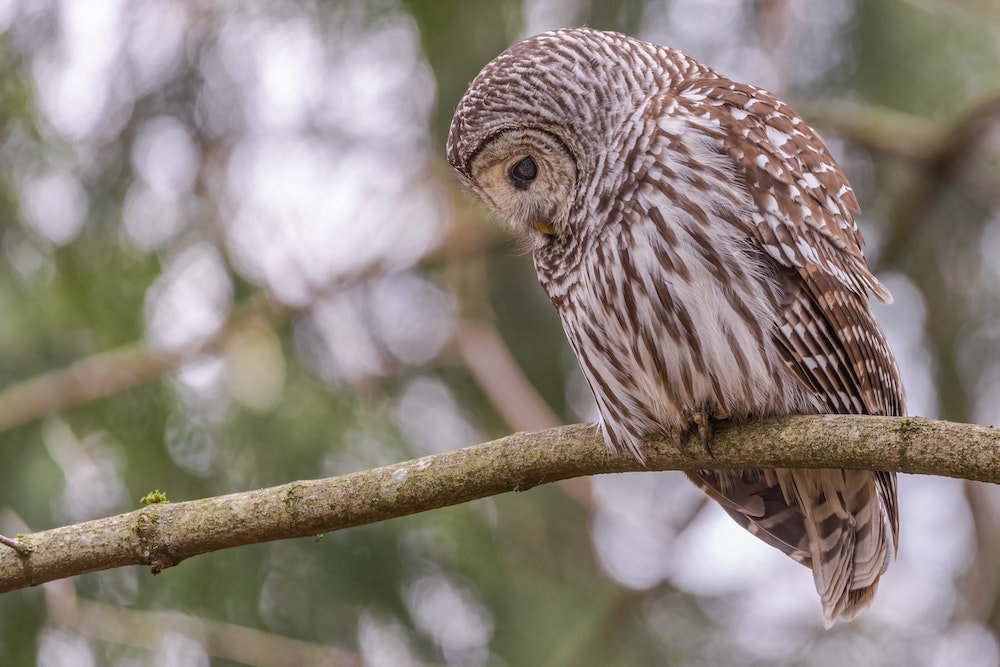
Photo by Philip Brown.



Photo by Philip Brown.
Far back into antiquity, owls have been shrouded with superstition. The sound of an owl often portended, even predicted, dire events. Even death. However, the call or hoot of an owl in early spring can be taken much differently. It is certain that such sounds foretell the onset of the annual breeding season and procreation of owls that will continue to inhabit our forests, fields, skies and waterways.

Barred Owl
Barred owls are year-round residents of Illinois forests. Although they inhabit upland hardwoods, these owls prefer large bottomland tracts of timber. Barreds are found throughout the state, but are most prevalent in southern Illinois. They are opportunistic nesters, using old crow and hawk nests as well as tree cavities. As most owls are, barreds are nocturnal; but they can occasionally be seen during daytime when foraging for their young. Diets are quite varied, including everything from small rodents, such as mice and voles, to aquatic species, such as carp and crayfish.
Especially under low light conditions, barred owls are sometimes mistaken for the larger, brownish great horned owl who frequents woodlands. However, the barred is smaller and lacks the prominent ear tufts of the great horned. And, in contrast to the yellow-eyed great horned owl, barreds have brown eyes.
When you step outside at dusk on a quiet, late spring evening and a familiar “hoot” greets you from a nearby bottomland timber, there is a good chance it is a barred owl. Although your day is winding down, the barred’s day is just beginning.

Eastern Screech Owl
The eastern screech owl is Illinois’ smallest year-round resident owl and the only small resident owl that has prominent ear tufts. Two color phases occur, the gray and a bright reddish-brown phase. Originally a woodland owl, it adapted well to city parks with numerous trees and to 19th and 20th century Illinois farmsteads because of their savanna-like makeup with border windbreaks, orchards and numerous shade trees. Many a farm kid fell asleep on sultry August nights, listening to the sometimes mournful, wavering, eerie repertoire of several screeches at varying locations over the farmstead—pondering what folklore said about their meanings. Peoples the world over have held owls in special regard, including our American Indian cultures.
Eastern screech owls eat a variety of insects; small rodents, mammals, and birds; as well as reptiles and amphibians. They nest in tree cavities and specially made wooden nest boxes where they lay from three to seven white eggs during April and May. Screech owls are often tormented by crows and blue jays once this owl’s daytime roosting site is discovered.
If you are fortunate enough to have screech owls near your residence, on a midsummer night, throw open your bedroom windows, forgo the comforts of air conditioning, and experience a greater pleasure. Get lost in the screech’s sounds and imagine what they could be portending. Soon you will forget your worries and fall asleep.
Robert J. Reber is an emeritus faculty member in the Department of Food Science and Human Nutrition of the University of Illinois at Urbana–Champaign. He has been a lifelong student of many aspects of the Natural World, including archaeology. Bob has served as a managing editor and author for publications such as The Illinois Steward magazine and the Illinois Master Naturalist Curriculum Guide.
Submit a question for the author